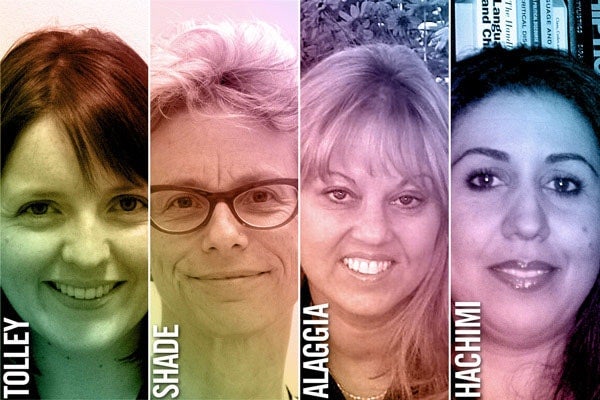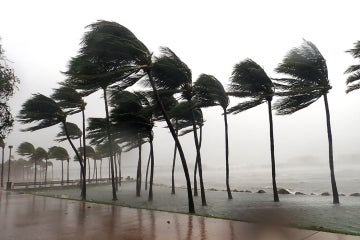
Perspectives: National Day of Remembrance and Action on Violence Against Women
Published: December 4, 2013
In 1991, the Government of Canada declared Dec. 6 the National Day of Remembrance and Action on Violence Against Women. Established to commemorate the 14 young women murdered during the École Polytechnique massacre in Montreal, the day also provides an opportunity to consider the continued violence perpetrated against women and girls around the world.
Since then, the day has come to mean many things to many people, sparking conversations ranging from our fascination with extreme acts of violence, to the role that social media plays as a venue for abuse and threats, to the plight of women and girls whose everyday reality is violence at the hands of their family and loved ones.
But remembering is only one aspect of this commemorative day’s purpose. The other purpose is action.
Writer Kelly Rankin asked U of T experts what role a Day of Remembrance can play in spurring action against gender violence.
—————————————————————————————————————————
Erin Tolley, assistant professor, political science, U of T Mississauga
December 6 is a reminder of the distance that we still need to go to achieve gender equality. Yes, a majority of provinces are currently led by female premiers, universities now graduate more women than men, and as Facebook’s Sheryl Sandberg tells us, if we just “lean in,” we really can have it all. And yet, a Canadian woman is sexually assaulted once every 17 minutes, the gendered wage gap persists with female workers earning just 72 cents on every man’s dollar, and frosh are still being welcomed to university campuses with sexualized activities and rape chants.
While the tragic scale of the shooting at L’École Polytechnique was in some ways an outlier, this day reminds us of the everyday inequality, misogyny and violence that underpinned those events. These things are not simply artefacts of the past.
With public discourse and media coverage focusing on the “shattering” of glass ceilings and the few women who have succeeded in relatively high-profile domains, we often forget that inequality still exists. While we should celebrate women’s achievements — and there are many — we cannot let those accomplishments detract from the broader institutional changes that are needed to address gendered assumptions about women’s position in society, systemic inequalities in working conditions, and a culture that downplays, fetishizes or ignores violence.
—————————————————————————————————————————
Leslie Shade, associate professor, Faculty of Information
December 6 allows us to commemorate women whose lives have been cut short by senseless acts of violence and misogyny. It is a moment and a space for us to be strong together and to reclaim our private and public spaces — our communities and our campuses — for our own safety, empowerment and strength.
—————————————————————————————————————————
Ramona Alaggia, associate professor, Factor-Inwentash Faculty of Social Work
In approaching December 6 as 'that tragic day 24 years ago when 14 women were gunned down and murdered simply for being women, with numerous others injured in the Montreal Massacre,' I am tempted to be swept away by sentiments that we as a society have been transformed and are "moving on."
And while that might seem to be a comforting sentiment to cling to, it is clear to me that there is much more work to be done through the violence against women movement — as part of the larger women's liberation movement — in memory of those women who have lost their lives to violence.
Any social movement as significant as this needs a full 100 years to mature and given this context we are not even halfway through such monumental social change. Today, as I write this, I observe an unfortunate continuing stance of hyper-vigilance adopted by women in their everyday lives that stems from ongoing societal, cultural and structural violence. Having to use panic buttons for protection at night on campuses across the country; covering one's drink to protect against rape drugs; women enduring assassination attempts for seeking an education; how the simple act of taking a bus can become a site of sexual violence; not to mention the numbers of missing Aboriginal women unaccounted for across our country. These are but a few examples of why our work as feminists is not nearly done.
This hyper-vigilance is further fuelled by social media abuses. Cyber stalking of women is on the increase and the internet is used as a tool of sexual harassment. "Slut shaming" and "rape culture" are unfortunate realities. One only needs to Google slut and rape jokes to bring forward a proliferation of websites that spew forth the language of violence against women.
Yet at the same time we have unyielding evidence of acts of resistance with the emergence of Slut Walks across the globe, men working as allies through the ‘White Ribbon Campaign' to end men's violence against women, Take Back the Night still marches on, and as well we have the Green Dot campaign on our own campus. These are important acts of solidarity aimed at ending violence against women and one day, as the movement has reached its goals, these will be only reminders of a darker time long gone.
(Ramona Alaggia’s response first appeared on the Human Resources & Equity website.)
—————————————————————————————————————————
Atiqa Hachimi, assistant professor, historical and cultural studies, U of T Scarborough
As a sociolinguist, I am trained to explore the connections between language, discourse and power. Events such as the Day of Remembrance have the potential to propel a cultural politics that renders unacceptable discourses that accept and even celebrate male violence in its varied forms.
Kelly Rankin is a writer with University Relations at the University of Toronto.



